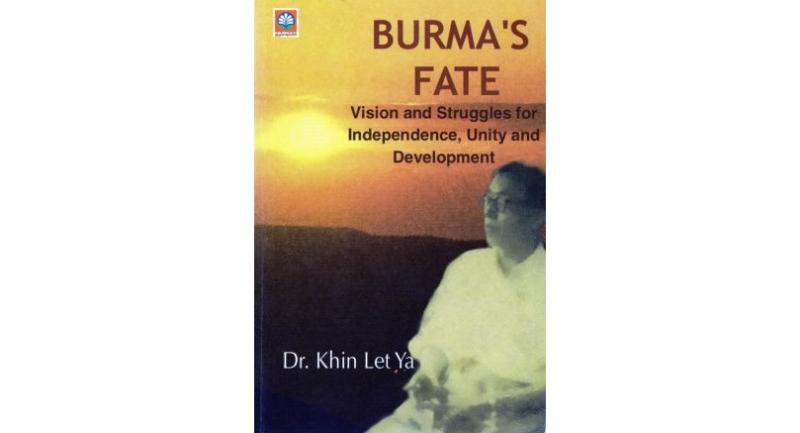The Burmese independence hero who never made it home

Right-hand man of founding father Aung San, Bo Let Ya fought British rule then home-grown dictatorship, before factionalism caught up with him in Thailand
“Never trust your comrades,” may have been the last words that flashed through Bo Let Ya’s mind as he fell in a hail of M16 bullets. The assault by Karen rebels on his Thailand-Myanmar border stronghold came in November 1978. Three decades before, he had helped liberate Myanmar from British rule as a member of the Thirty Comrades.
Born Hla Pe in 1911 in Pyinmana, central Burma, to a civil servant father and half-Chinese mother, Bo Let Ya was well placed to become a revolutionary intellectual. As a student he joined the liberation movement, desperate to free his country from foreign occupation. He became a close friend of Aung San, and went on to serve as the right-hand man of modern Burma’s founding father.
Dr Khin Let Ya, his eldest daughter, has spent the past three decades tracing Bo Let Ya’s revolutionary path for her book “Burma’s Fate: Vision and Struggle for Independence, Unity and Development”.
In it she tracks her father’s journey through the struggle against colonial rule, the transition administration and his revolt against Ne Win’s dictatorship.

Burma’s fight for independence was waged against the backdrop of World War II with strong support from the Japanese Imperial Army. The author describes how Aung San and Bo Let Ya travelled for military training on the occupied island of Hainan, China, where they were taught strategies for command and administration. Meanwhile their wily comrade Shu Maung (Ne Win) chose battlefield-command training, a decision that paid off. Aung San and Bo Let Ya became skilled in civilian administration, but Ne Win’s military training saw him rise to lead the country with an iron fist from 1962 to 1988.
The three were leading members of the Thirty Comrades, the embryo around which the Burma Independence Army formed in Thailand, in December 1941, dispatching volunteers to fight in Myanmar.
After independence, Bo Let Ya played a key role in the administration, rising to become defence minister, before Ne Win took power in the coup of 1962 and promptly threw his former comrade in jail. Bo Let Ya spent much of his four years in Insein Prison painting artworks that were later collected and published by Khin Let Ya.
In 1969 he joined up with former prime minister U Nu and formed the Parliamentary Democracy Party (PDP) in Thailand, taking the fight to Ne Win’s regime until his last day in 1978. But the two rebel leaders failed to see eye to eye. While U Nu lived a relatively comfortable life of exile in Bangkok, Bo Let Ya’s focus was firmly on the Myanmar border. He rented a house in Kanchanaburi’s Sangkhla district from where he could monitor his homeland.
Burma’s brightest and best had been united by the struggle against British rule, but faced with a home-grown dictator, fractures quickly began to appear. “Within the first year of the PDP’s formation, different factions had developed within the party, to Bo Let Ya’s dismay,” writes Khin Let Ya. She adds that financing the struggle was also a major problem: “funds weren’t forthcoming while U Nu was leading the revolution. There were reports of mismanagement of funds by his son.”
PDP’s armed wing, the People’s Revolutionary Army, was not strong enough to stand against the Tatmadaw (Myanmar military) alone, so it worked together with armed ethnic groups of Shan, Karen, Mon and Shin. Unfortunately, U Nu had fallen out with the powerful Karen militants.
Change came when the Thai government asked U Nu to leave the country in 1973, and Bo Let Ya took leadership of the PDP. But by that time serious differences had emerged between the PDP and ethnic groups. While the objective of the Burmese PDP was nationwide democracy, the ethnic armies were fighting for autonomy in their respective states.
By 1975 the political situation in neighbouring Thailand had swung against Burma’s rebels. After a massacre of students at Thammasat University in October 1976, ultra-rightist leaders dominated Thai politics, making it difficult for the Burmese resistance to use Thailand as their launching pad against Ne Win.
Bo Let Ya was in poor health. Entrusted with his care was Dr Mahn Myint Saing, a Karen physician who happened to be married to a niece of Bo Let Ya’s wife. However, the doctor took advantage of his trusted position to embezzle military funds.
Bo Let Ya’s only son, Aung Let Ya, who had joined the resistance movement in 1969, quarrelled with the doctor over the funding problem. He was shot dead in an ambush in July 1978, less than five months before the assassination of his father.
On the morning of November 27, 1978, as Bo Let Ya was heading towards the toilet at his jungle camp in Prachuap Khiri Khan, he was shot dead by suspected Karen fighters. The author points the finger at Mahn Myint Saing, who allegedly colluded with business interests and Karen rebels to seize Bo Let Ya’s stronghold for logging.
Three of his four bodyguards were also killed in the attack. The fourth is suspected of being the informant who aided the Karen attack. The assassination of Bo Let Ya was the final chapter of the resistance movement, after which fellow rebels were granted amnesty to return home.
The author and her family waited nearly a year before receiving final confirmation that her father was dead. But Bo Let Ya never made it back to his beloved homeland. His remains lie lost in an unmarked grave somewhere on a hillside in Thailand.





